Just north of 100 Mile House, a collection of historic buildings stands quietly at the side of BC’s Cariboo Highway—weathered, sturdy, and full of story. The 108 Mile Heritage Site wasn’t on our radar, but as the golden light hit the rooftops and we caught a glimpse of the massive log barn, we didn’t think twice. We pulled over.
Even though the site was closed for the day, we wandered the grounds. Camera in hand, we soaked in the stillness and history. And for me, there was a personal thread woven into this place. There was another Cariboo connection that made this quick stop a meaningful moment.
📌 Disclosure: This post contains affiliate links. If you make a purchase through them, we may earn a small commission—at no extra cost to you.
Table of Contents
BC’s Cariboo Highway Stop: 108 Mile Heritage Site
Located between 100 Mile House and Lac La Hache along Highway 97, the 108 Mile Heritage Site is easy to spot—and hard to resist. It’s spread across eight scenic acres. The site borders 108 Mile Lake and features a creek that once provided water to travelers and their animals.
This peaceful spot today was once a stop on the Cariboo Wagon – aka Waggon – Road. The wagon road was the major gold rush route of the 1860s. As its name suggests, 108 Mile House was the 108th mile on that legendary trail.
Today the site is listed on Canada’s Historic Places. The site is home to 13 historic buildings. Some are original, others carefully relocated here from around the region. They date from the 1860s into the early 20th century. Even if the site isn’t open when you arrive, the buildings themselves are worth a walkabout.
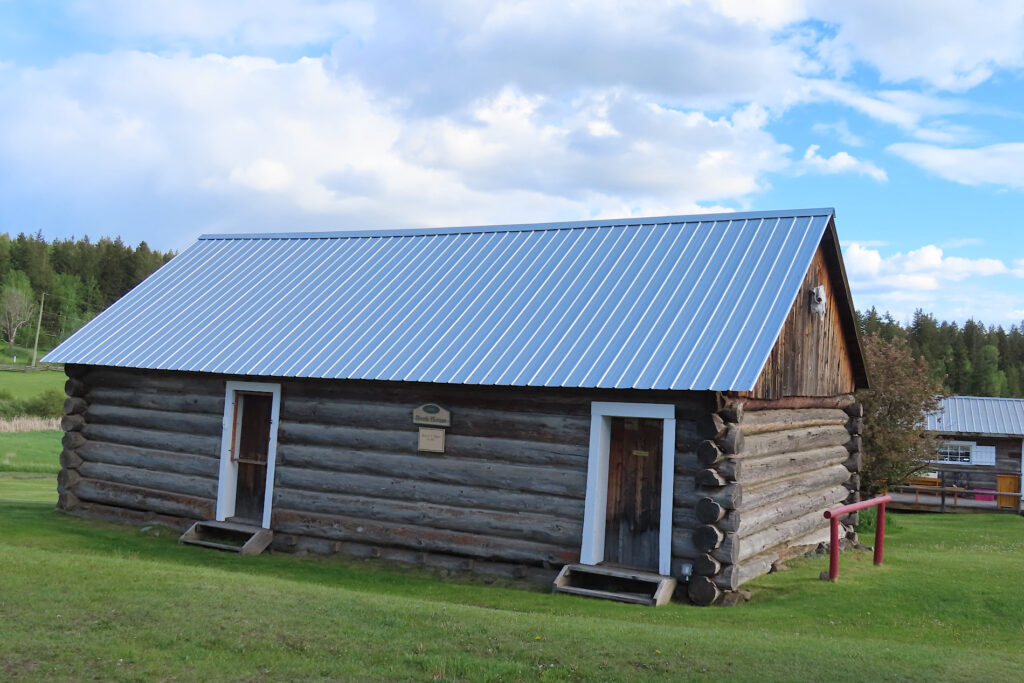
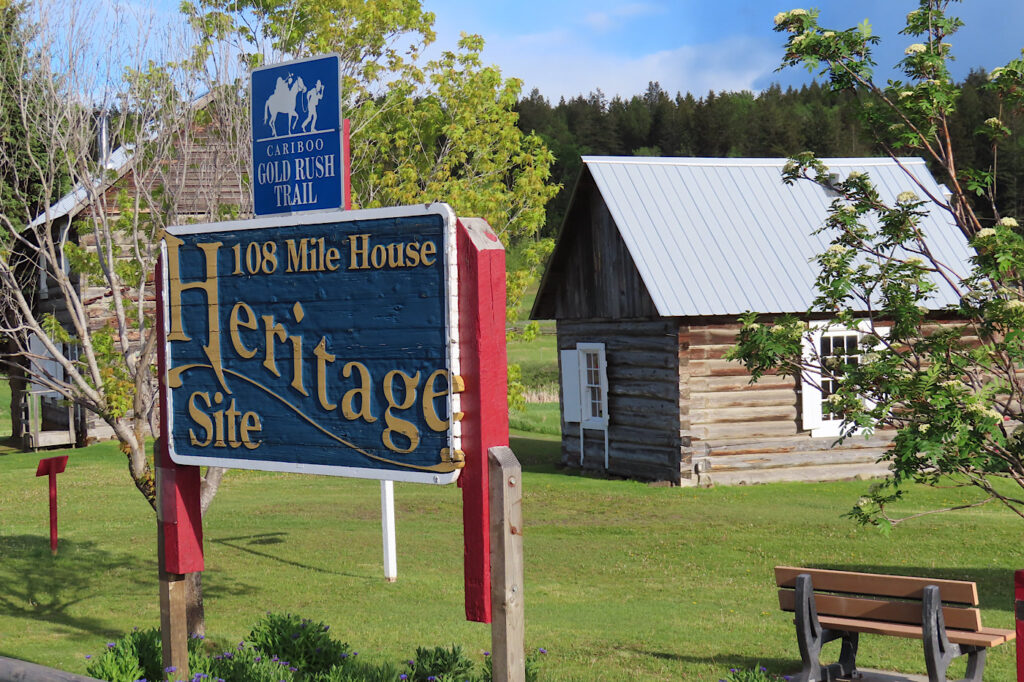
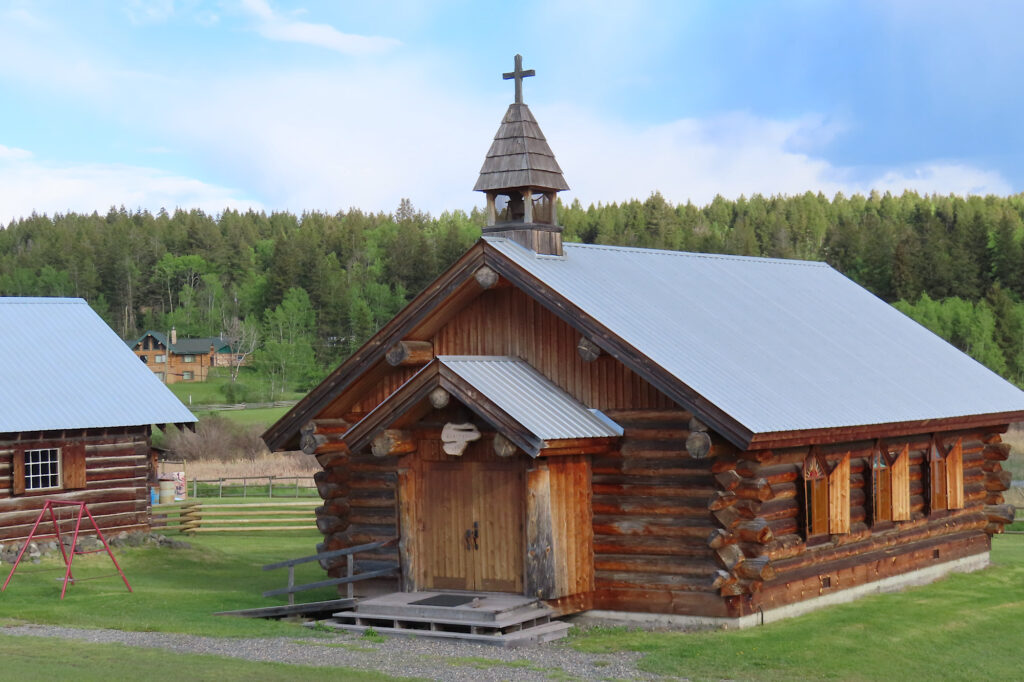
A Living Timeline of the Cariboo
This assorted collection of buildings illustrates how this part of BC developed—through gold rush days, the ranching era, and the rise of logging and telegraph services.
108 Mile Heritage Site Building Highlights
- The 108 Mile Post House was originally built in the 1860s. It was relocated across the highway and is one of the few remaining gold rush-era post houses in BC.
- Several buildings support the legacy of the BX Stage Line, operated by Steve Tingley, who also owned Hat Creek Ranch.

- A 1932 one-room schoolhouse, moved to the site in recent years, reminds us of early Cariboo education.
- The Mack logging truck and portable sawmill, hauled up here in 1952, mark the beginning of what would become Ainsworth Logging.
The Watson Barn
The Watson Barn, built in 1908, is a showstopper. It measures 160 feet long, 40 feet wide and constructed entirely of heavy logs. This monstrous log building once housed dozens of Clydesdales. British owner – Captain Geoffrey Lancelot Watson – acquired almost 50,000 acres in the area. His pride and joy were his purebred Clydesdale horses.
When the First World War broke out, Watson returned to England and took up his officer’s commission again. On April 20, 1915, he was killed in action. He was 35 years old. Watson’s big log barn remained in continual use until the late 1950s before being left to the elements.
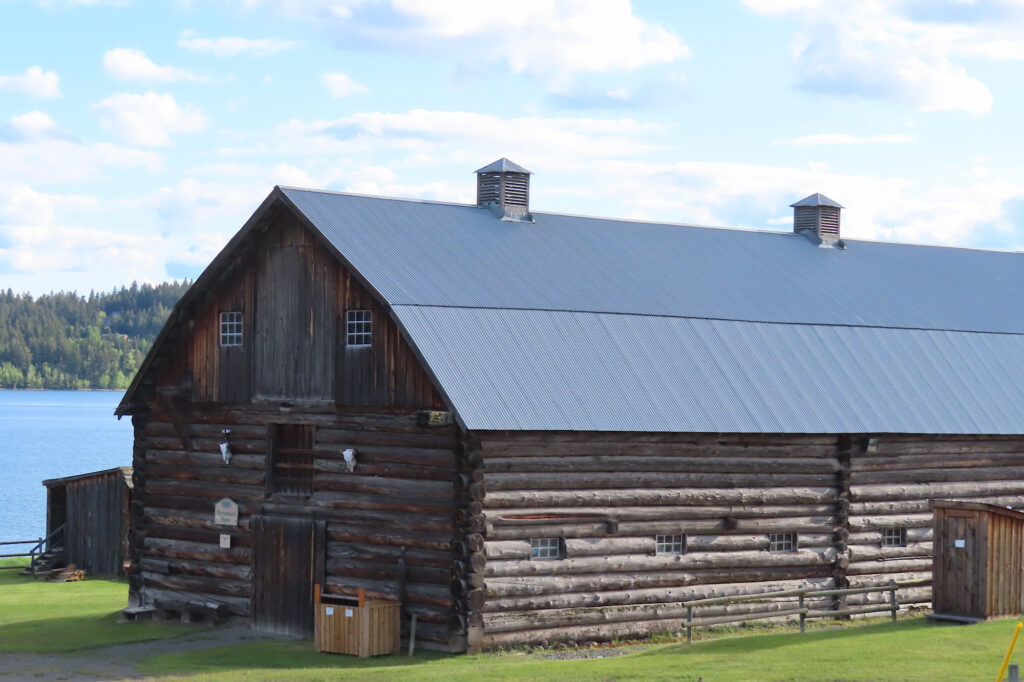
In 1979, the Block Brothers Realty Group, which now owned the 108 Mile Ranch property, transferred the seven-acre heritage site to the 100 Mile House Historical Society. Money was raised, and the buildings were restored. Each building and artifact tell a story of transition—from gold to grain, stagecoaches to sawmills.
A Personal Cariboo Connection
As we strolled the site, I found myself smiling. Years ago—decades now—my parents looked at a piece of property at 108 Mile. In fact, I think it was just over the hill from where I am standing. I still remember the drive, the wide-open landscape, and the excitement of the possibility.
They never did build on that land, but it left an imprint on our family lore. We’ve driven this stretch of road more times than I can count, always heading somewhere. But this was the first time we stopped long enough to let the place speak.

And it did.
Camping at Lac La Hache Provincial Park
Looking for a peaceful overnight after your heritage detour? Head just 12 km (7.5 mi) north to Lac La Hache Provincial Park. We camped here the night we visited the heritage site and were treated to:
- The call of loons over the lake
- A stunning sunset through the trees
- That sweet mix of forest air and starlit quiet that feels so purely Canadian
The park has basic facilities, lake access, and is a great spot for a relaxed evening before heading deeper into the Cariboo.
Why You Should Pull Over at the 108 Mile Heritage Site Before Camp
Even if you only have 15 minutes on your way to set up camp for the evening, this site is worth the stop.
It’s not just a photogenic cluster of old buildings. It’s a living archive of the Cariboo’s story—told through stagecoaches, log barns, schoolhouses, and creek water that still runs cold and clear.
So, take a moment the next time you’re cruising up Highway 97. Step out. Walk through history. Let the wind carry a few old voices your way.
You’ll be happy you did.
Have you visited the 108 Mile Heritage Site or other historic stops in the Cariboo? I’d love to hear your stories. Drop them in the comments or come say hello on Pinterest or Instagram.
📌 Previous post in this BC Road Trip series: Exploring Historic Hat Creek Ranch
📌 Next up: Kitselas Canyon National Historic Site
P.S. Don’t miss our round-up post outlining the entire BC road trip!

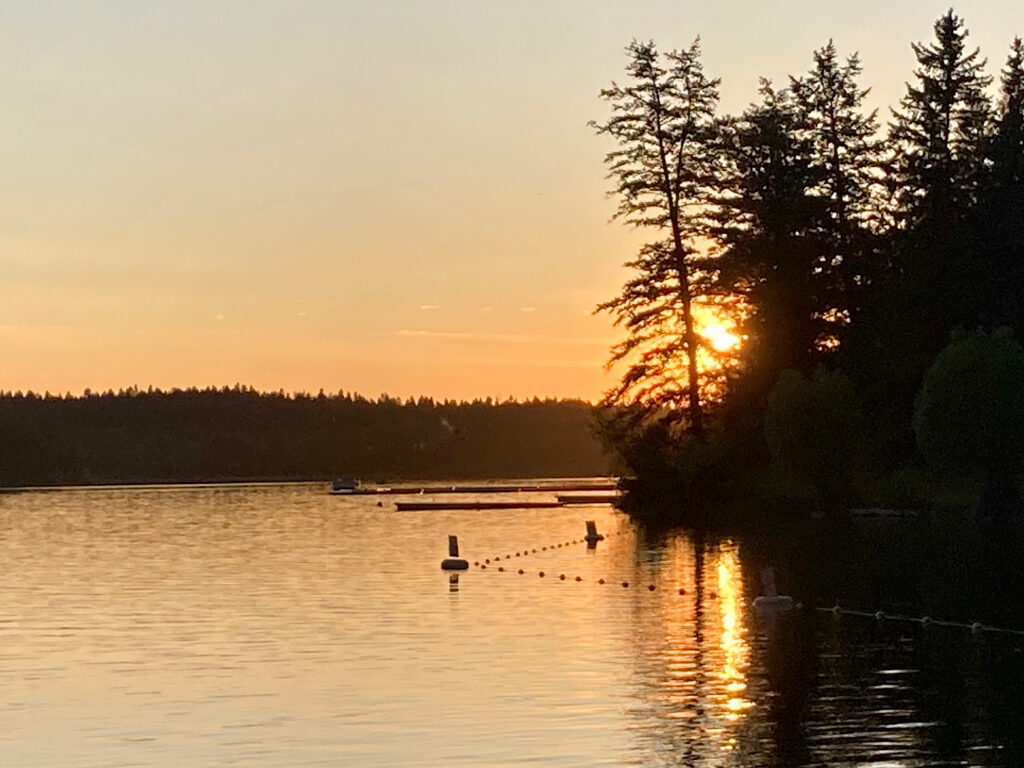
Leave a Reply